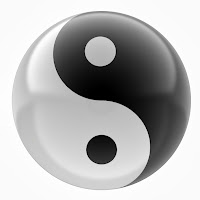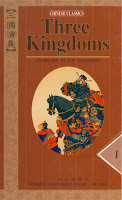In search for describing the Chinese term Qi (氣) I found: Ki in Japanese, Prana or Shakti in India, Gi in Korea, Ka in
ancient Egypt, the ancient Greeks called it Pneum, for native Americans it was the Great Spirit, in Africa it’s known as Ashe and in Hawaii as Ha or Mana and the list is not yet complete.

In all those old philosophies, Qi expresses the life force which animates the forms of the world. It is the vital energy or circulating life force that is thought to be inherent in all things. A living being is filled with it. A dead person has no more Qi - the warmth, the life energy is gone. The Egyptian described the same concept very similarly. A living person has the
Ka and in a dead one Ka left the body. They also believed that the Ka was sustained through food and drink. This is then the reason why food and drink offerings were presented to the dead. In
traditional Chinese medicine, Qi is believed to regulate a person’s spiritual, emotional, mental, and physical balance. A healthy individual has more Qi than one who is ill. However, health is more than an abundance of Qi. Health implies that the Qi in our bodies is clear rather than polluted and turbid; it is flowing smoothly like a stream and does not appear to be blocked or stagnant.

In martial arts (or acupuncture) the capacity to perceive the flow of Qi or to actually see or feel it, is something that can be cultivated through Qi Gong training. During the practice one cultivates the capacity to perceive Qi on different levels. It seems like a potential to be yet expressed. One could say it is like fullness and/or emptiness (compared to yin and yang concept) when we perceive ourselves and the world around as fluid and spacious. In those concepts it is not just experiencing our body to be comprised of patterns and flows of
Qì, but we also get to understand that ‘emotions’ and ‘thoughts’ are forms of energy. When a person understands this concept, it is possible to control and deviate the opponent’s energy with our own. Posing the question “Have you ever tried to pick up a child or a dog who did not want to be lifted?” Joe Hyams offers the result: “They both seem to be heavier—this is because the mind is truly a source of power, and when a mind and body are coordinated, Qi manifests itself.”
But Qi is more than the above. It is also the life energy one senses in Nature, the vibratory nature of any phenomena, the flow and tremor that is happening continuously at molecular, atomic and subatomic levels. The Earth itself is also moving, transforming, breathing, and alive with it.
 The social system is represented by people or groups of people. It is a social structure that refers to entities or groups of people that are definitively in relation to each other by having different functions, characteristics, origin or status. A social system is comprised of interdependent set of cultural and structural elements understood as a unit. Sociology is the study of human social behavior and especially the study of the origins, organizations, institutions and development of human society.
The social system is represented by people or groups of people. It is a social structure that refers to entities or groups of people that are definitively in relation to each other by having different functions, characteristics, origin or status. A social system is comprised of interdependent set of cultural and structural elements understood as a unit. Sociology is the study of human social behavior and especially the study of the origins, organizations, institutions and development of human society. The economic system encompasses the production, distribution or trade of goods and services and consumption by different individuals, businesses, organizations, or governments. Economy as a study deals with the production and consumption of goods and the transfer of wealth and explains how people interact within markets to get what they want or how they accomplish certain economical goals.
The economic system encompasses the production, distribution or trade of goods and services and consumption by different individuals, businesses, organizations, or governments. Economy as a study deals with the production and consumption of goods and the transfer of wealth and explains how people interact within markets to get what they want or how they accomplish certain economical goals.




















